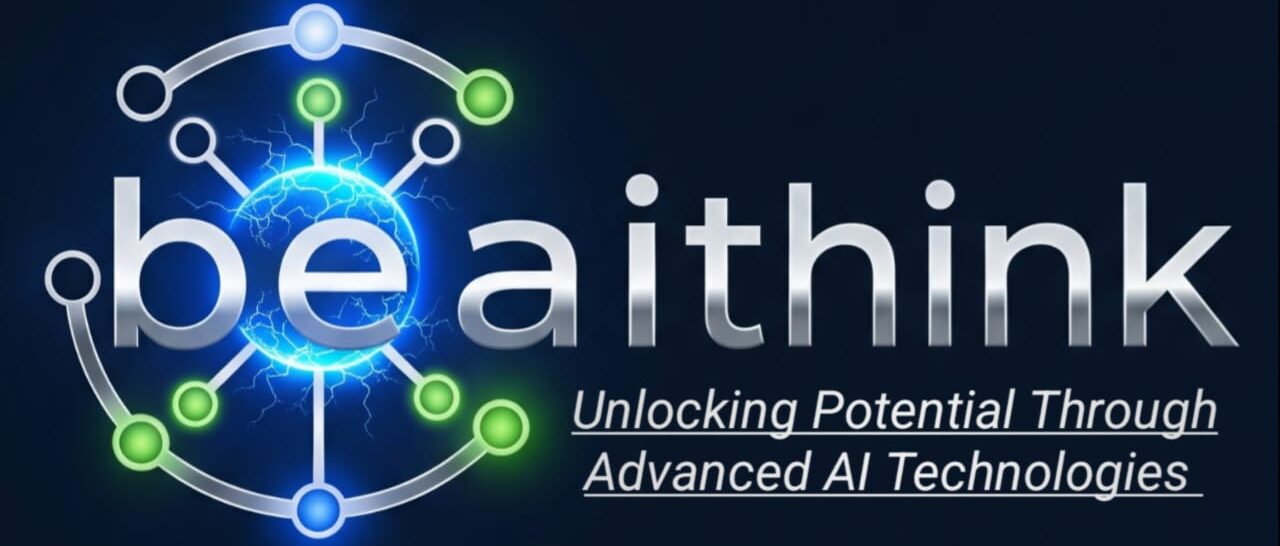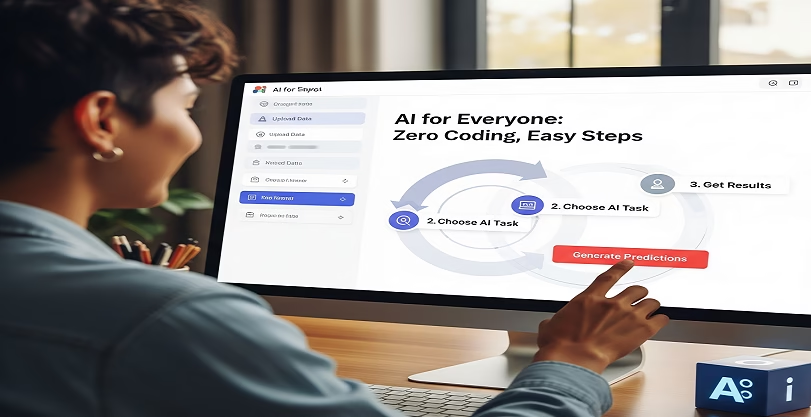Are you ready to unlock the hidden potential of writing AI prompts? The art of crafting precise instructions for AI models has evolved into a sophisticated skill – one that separates amateur results from professional-grade outputs.
This comprehensive guide reveals the advanced techniques and insider knowledge needed to master prompt engineering. You’ll discover:
- Secret strategies for generating stunning AI art
- Professional methods for crafting high-quality text outputs
- Advanced frameworks used by industry experts
- Practical applications across different AI tools
The difference between basic and expert-level prompt engineering lies in understanding the nuanced language that AI models respond to. Just as a master chef knows exactly which ingredients create extraordinary flavors, skilled prompt engineers understand how to combine specific instructions, context, and constraints to produce remarkable results.
Why Advanced Knowledge Matters
Basic prompts might get you basic results, but professional-quality outputs require deeper expertise. The techniques shared in this masterclass will help you:
- Create consistent, high-quality outputs
- Save time with reusable prompt libraries
- Develop a systematic approach to prompt refinement
- Build professional-grade workflows
Whether you’re a creative professional, content creator, or business owner, these advanced prompt engineering skills will transform your ability to harness AI’s creative potential.
The Need for Advanced Prompt Design Techniques
Basic prompt design often falls short of delivering professional-quality results. A simple command like “create an image of a sunset” or “write a story about love” leaves too much room for interpretation, resulting in generic, inconsistent outputs that fail to meet professional standards.
Common Limitations of Basic Prompting:
- Lack of specificity in style and tone
- Inconsistent quality across multiple generations
- Limited control over artistic elements
- Generic outputs that don’t stand out
- Poor handling of complex requirements
Advanced prompt design techniques address these limitations through structured approaches and strategic thinking. These methods unlock the full potential of AI models, enabling users to create content that rivals human-generated work.
Why Basic Prompts Don’t Cut It:
“The difference between basic and advanced prompting is like the difference between asking a child to draw a picture versus directing a professional artist with specific vision and requirements.”
Professional-grade outputs require:
- Precise Parameter Control – Detailed specifications for style, mood, and technical elements
- Context-Rich Instructions – Background information and reference points
- Strategic Layering – Building complexity through multiple prompt components
- Quality Controls – Built-in mechanisms for consistency and error checking
Advanced prompt design techniques also enable:
- Reproducible results across multiple generations
- Fine-tuned control over artistic and literary elements
- Complex narrative structures and sophisticated outputs
- Brand-specific content alignment
- Multi-modal content generation
The mastery of advanced prompting unlocks capabilities beyond simple text generation. Users can create intricate artwork, develop complex narratives, and generate professional-quality content that meets specific industry standards. These techniques transform AI tools from basic assistants into powerful creative partners capable of producing publication-ready content.
Key Components of a Successful Prompt Engineering Masterclass
A successful prompt engineering masterclass equips learners with essential components that transform basic AI interactions into professional-grade outputs. These components serve as building blocks for creating precise, effective prompts that generate high-quality content consistently.
1. Specifying Genre, Tone, Style, and Plot Points
The foundation of advanced prompt engineering lies in the detailed specification of creative elements. Each component plays a vital role in shaping the AI’s output:
Genre Specification
- Historical fiction requires period-accurate details
- Technical writing demands precise terminology
- Horror needs atmospheric elements
- Academic writing follows scholarly conventions
Tone Control
- Professional vs. casual language choices
- Emotional resonance (humorous, serious, inspirational)
- Audience-appropriate vocabulary
- Cultural sensitivity considerations
Style Elements
- Writing techniques (descriptive, narrative, analytical)
- Sentence structure variations
- Literary devices implementation
- Voice consistency
Plot Points Management
- Story arc development
- Character progression
- Scene setting parameters
- Conflict introduction and resolution
These specifications work together to create a comprehensive framework for AI content generation. Consider this example prompt structure:
Create content in [genre] style, maintaining a [tone] tone. Use [specific style elements] and include [plot points]. Target audience: [demographic]. Purpose: [intended outcome].
The mastery of these components enables users to:
- Generate consistent brand messaging
- Create character-driven narratives
- Develop educational materials
- Produce marketing copy
- Craft technical documentation
Advanced prompt engineers understand how these elements interact and influence each other. A horror story written for young adults requires different tone and style specifications than one written for mature readers. Technical documentation for experts uses different language patterns than user guides for beginners.
The art of balancing these components distinguishes professional-grade prompts from basic instructions. Through practiced application and experimentation, prompt engineers learn to fine-tune each element to achieve desired outcomes across various content types and purposes.
2. Building Reusable Prompt Libraries for Enhanced Efficiency
Creating a reusable prompt library acts as your personal AI communication toolkit, dramatically reducing the time spent crafting prompts from scratch. Think of it as building your own collection of proven formulas that consistently deliver high-quality results.
Key Benefits of Maintaining a Prompt Library:
- Time Optimization: Access pre-tested prompts instantly for recurring tasks
- Quality Consistency: Rely on prompts that have proven successful
- Rapid Iteration: Build upon existing templates rather than starting fresh
- Knowledge Sharing: Enable team collaboration through shared prompt repositories
A well-structured prompt library should include:
- Base TemplatesGenre-specific frameworks
- Tone variations
- Style guidelines
- Plot structure outlines
- Modifier CollectionsTechnical specifications
- Creative parameters
- Output format instructions
- Context-setting elements
Organization Strategies for Your Prompt Library:
[Project Type] ├── Core Prompt ├── Variations └── Success Examples
Pro Tip: Tag your prompts with metadata for quick searching:
- Use case
- Target platform
- Success rate
- Last modification date
Implementation Methods:
- Create a dedicated folder structure in your preferred note-taking app
- Use version control systems like GitHub for collaborative environments
- Implement a rating system to track prompt effectiveness
- Document successful combinations and unexpected outcomes
Incorporating concepts from the field of AI and machine learning, building a comprehensive prompt library requires systematic documentation of both successful and failed attempts. Each prompt becomes a learning opportunity, contributing to an evolving knowledge base that grows stronger with every interaction.
Regular maintenance and updates keep your library relevant as AI models evolve. Consider setting up a review schedule to test and refine your prompts, ensuring they continue to generate professional-quality outputs across different projects and platforms.
3. Iterative Refinement Methods: Achieving Continuous Improvement in Prompt Design
Iterative refinement is a fundamental technique in advanced prompt engineering. It allows AI practitioners to systematically enhance their prompt effectiveness through structured experimentation and feedback loops.
The Iterative Refinement Process:
- Initial Prompt Creation
- Draft baseline prompt
- Set clear objectives
- Define success metrics
- Output Analysis
- Evaluate generated content
- Identify gaps and inconsistencies
- Document specific areas for improvement
- Prompt Adjustment
- Fine-tune language and parameters
- Add or remove context elements
- Modify instruction specificity
- Testing and Validation
- Run multiple iterations
- Compare results against objectives
- Track improvements systematically
Practical Implementation Tips:
- Create A/B testing scenarios to compare prompt variations
- Keep detailed logs of changes and their impacts
- Focus on one element at a time during refinement
- Document successful patterns for future reference
Advanced Refinement Strategies:
Base Prompt → Enhanced Prompt → Optimized Prompt → Expert-Level Prompt
Each iteration should address specific aspects:
- Clarity of instructions
- Contextual relevance
- Output consistency
- Creative boundaries
- Technical accuracy
Professional prompt engineers employ systematic tracking methods to measure improvement:
- Success rate metrics
- Quality assessment scores
- User feedback integration
- Performance benchmarks
The iterative refinement process transforms basic prompts into sophisticated instructions that consistently generate professional-quality outputs. This methodical approach enables prompt engineers to develop increasingly effective communication patterns with AI models, resulting in higher-quality generated content across various applications.
4. Using Advanced Techniques to Improve AI Output
Meta-prompting is an advanced technique in prompt engineering where we create prompts that instruct the AI on how to respond. This method helps the AI understand and follow complex instructions more accurately.
Key Strategies for Meta-Prompting:
- Role-Based Prompting: Assign specific roles to the AI, define its expertise level, and set behavioral parameters.
- Chain-of-Thought Prompting: Break down complex tasks into smaller parts, create logical sequences, and enable step-by-step reasoning.
Techniques to Enhance Results:
- Contextual Anchoring: Provide reference examples, set quality benchmarks, and define success criteria.
- Parameter Optimization: Adjust the temperature setting, control the token length, and specify the response format.
These strategies work together to create a strong framework for generating high-quality content. By using meta-prompting and enhancement techniques, users can achieve:
- Consistent tone and style across outputs
- Enhanced creativity within defined limits
- Better alignment with intended goals
- Less need for manual editing
- More accurate responses
Real-World Uses:
- Creative writing projects requiring specific stylistic elements
- Technical documentation with precise formatting requirements
- Marketing content that maintains brand voice
- Educational materials with controlled complexity levels
The combination of meta-prompting and enhancement techniques creates a powerful system for improving AI output quality. These methods form the basis of professional-grade prompt engineering, enabling users to achieve consistent, high-quality results in various applications and use cases.
Practical Application: Understanding Google’s Prompting Essentials Framework
Google’s Prompting Essentials Framework has transformed how professionals design AI prompts by introducing a structured 5-step process:
1. Define the Task Scope
- Identify specific objectives
- Set clear boundaries and constraints
- Establish expected output format
2. Craft Clear Instructions
- Use precise, unambiguous language
- Break complex tasks into smaller components
- Include relevant context and background information
3. Provide Examples
- Demonstrate desired output format
- Include sample inputs with corresponding outputs
- Highlight key patterns and relationships
4. Specify Output Parameters
- Define response length and structure
- Set tone and style requirements
- Establish quality criteria
5. Implement Quality Controls
- Add validation checkpoints
- Include error handling instructions
- Request self-review mechanisms
This framework empowers users to create robust prompts that generate consistent, high-quality results. The systematic approach eliminates common pitfalls such as ambiguous instructions or incomplete specifications.
To effectively leverage this framework, it’s crucial to understand some key principles of prompt engineering.
Real-world applications include:
- Data analysis prompts
- Content generation workflows
- Code documentation requests
- Technical writing assignments
- Creative project briefs
The framework’s versatility makes it applicable across different AI models and use cases, from simple text generation to complex analytical tasks.
Masterclass Case Study: Industry Applications of Generative AI Tools with a Focus on Responsible Usage
The transformative impact of generative AI spans across multiple industries, each showcasing unique applications while adhering to responsible usage guidelines. Let’s explore real-world implementations that demonstrate the power of well-crafted prompts:
1. Healthcare
- Medical Documentation: AI assists healthcare providers in generating detailed patient notes, reducing administrative burden while maintaining HIPAA compliance
- Research Analysis: Researchers use specialized prompts to analyze medical literature and identify patterns in clinical data
2. Creative Industries
- Advertising: Agencies leverage AI to create multiple ad variations while maintaining brand consistency
- Publishing: Authors utilize AI for story development and editorial assistance, with strict plagiarism checks
3. Financial Services
“Our AI implementation has reduced report generation time by 60% while maintaining regulatory compliance” – Leading Financial Institution
4. Education
- Curriculum Development: Teachers create personalized learning materials through carefully structured prompts
- Student Assessment: AI assists in generating varied practice questions and providing detailed feedback
5. Manufacturing
- Quality Control: AI-generated inspection protocols
- Process Optimization: Smart prompts for workflow improvement
- Safety Documentation: Automated safety procedure updates
These industry applications demonstrate the necessity of combining advanced prompt engineering with strict ethical guidelines. Each successful implementation relies on carefully crafted prompts that consider both technical requirements and responsible AI principles.
Responsible Usage Best Practices
- Data Privacy Protection
- Regular Output Verification
- Human Oversight Integration
- Ethics of AI Content Guidelines
- Bias Detection and Mitigation
Validating Your Skills: The Importance of Certification Programs in AI Prompt Engineering Mastery
Professional certification programs are essential for establishing yourself as a qualified AI prompt engineer. These programs provide structured pathways to master advanced prompt engineering techniques while offering tangible proof of your expertise.
Key Benefits of AI Prompt Engineering Certifications:
- Industry Recognition: Certified prompt engineers stand out in the job market, demonstrating their commitment to professional development
- Validated Expertise: Programs like Google’s Prompting Essentials verify your ability to create effective prompts across different AI models
- Structured Learning Path: Certification courses provide systematic training from basic concepts to advanced techniques
- Practical Application: Hands-on experience with real-world scenarios and industry-standard tools
- Network Building: Connect with other professionals and experts in the field
Leading certification programs incorporate valuable insights such as “The secret to becoming a master prompt engineer lies in understanding both the theoretical foundations and practical applications of AI prompting techniques” – Learn Prompting Academy
Skills Covered in Professional Certifications:
- Advanced prompt design methodologies
- AI model-specific optimization strategies
- Security considerations and ethical guidelines, including aspects from the “introduction to AI assurance” which is critical in today’s landscape
- Performance measurement and quality assessment
- Cross-platform prompt adaptation
These certification programs typically require 6-20 hours of dedicated study time, depending on the depth and breadth of content. Many programs offer flexible learning schedules, allowing professionals to balance their certification journey with existing commitments.
The investment in certification pays dividends through enhanced career opportunities and the ability to command higher rates for specialized prompt engineering services. Organizations increasingly seek certified professionals who can demonstrate their expertise through recognized credentials.
Additionally, understanding “the practical application of AI prompting techniques” is crucial for success in this field.
Conclusion
Prompt engineering is the key to unlocking AI’s true potential. This masterclass has revealed the secrets behind crafting prompts that generate professional-quality outputs – a skill set that distinguishes exceptional AI practitioners from casual users.
Your journey into advanced prompt engineering doesn’t end here. Consider these next steps to further enhance your expertise:
- Enroll in specialized certification programs from industry leaders like Google and Learn Prompting
- Build your personal library of effective prompts
- Practice iterative refinement with real-world applications
- Join AI prompt engineering communities to share insights and learn from peers
The future of generative AI technology promises unprecedented opportunities for those who master prompt engineering. As AI models become more sophisticated, skilled prompt engineers will:
- Shape the creative landscape across industries
- Drive innovation in content creation
- Pioneer new approaches to problem-solving
- Create value through AI-human collaboration
The secret to success lies in continuous learning and adaptation. Each prompt you craft is an opportunity to refine your skills and push the boundaries of what’s possible with AI. The tools and techniques shared in this masterclass serve as your foundation – now it’s time to build upon them and create your own success story in the evolving world of AI technology.
FAQs (Frequently Asked Questions)
What is the importance of advanced knowledge in writing prompts AI?
Advanced knowledge in writing prompts AI is crucial for generating professional-quality art and text. It enables users to design effective prompts that surpass basic limitations, resulting in superior AI-generated content.
How can specifying genre, tone, style, and plot points enhance AI-generated content?
Precise instructions regarding genre, tone, style, and plot points significantly improve the quality and relevance of AI-generated content by guiding the AI to produce outputs that align closely with the desired creative direction.
What are reusable prompt libraries and how do they improve efficiency?
Reusable prompt libraries are collections of well-crafted prompts that can be accessed and utilized across different projects. They enhance content generation efficiency by saving time and ensuring consistency in output quality.
What is iterative refinement in prompt design and why is it important?
Iterative refinement involves continuously improving prompts based on feedback and results. This method leads to progressive enhancement of output quality over time, ensuring more accurate and effective AI responses.
How do meta-prompting techniques and power-up strategies boost prompt effectiveness?
Meta-prompting techniques involve using prompts about prompts to guide AI behavior, while power-up strategies amplify prompt impact. Together, they enhance the effectiveness of prompts by enabling more nuanced control over AI outputs.
Why are certification programs important for mastering AI prompt engineering?
Certification programs validate an individual’s competency in AI prompt engineering, enhancing career prospects by demonstrating mastery of advanced skills essential for leveraging generative AI technology professionally.




